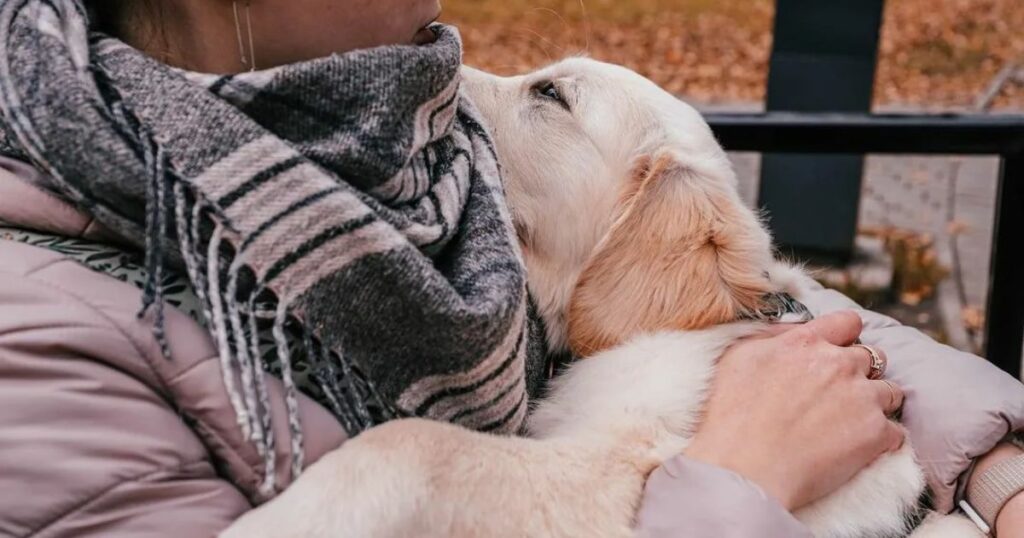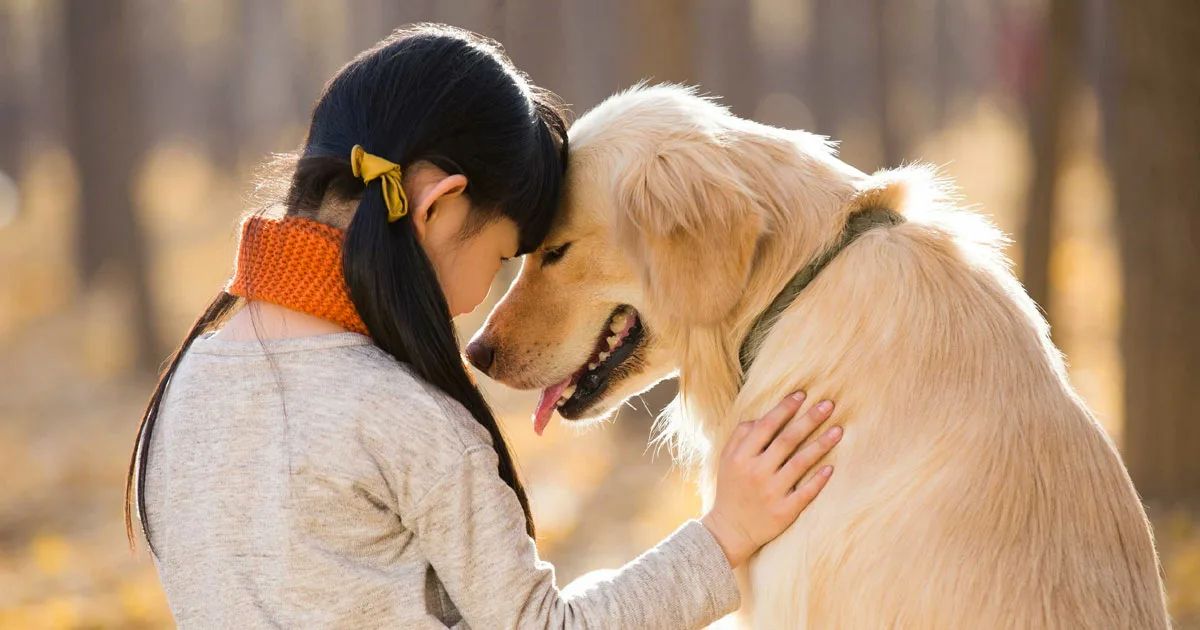Dogs haven’t mastered English fluently yet, they resort to other methods to communicate with us. This may involve barking, running around, or burying their head under your arm or against your chest. When your dog buries into you, it’s a moment of bonding, but it’s also crucial to understand what they’re trying to convey. Let’s explore some of the reasons why dogs engage in this behavior with their human companions.
9 Reasons Why Your Dog Buries Their Head into You
Here are 9 possible reasons why dogs bury their heads into their owners:
Simply Looking for Attention
Dogs love being close to their owners. By putting their head on you, they want petting and cuddles. Your dog wants your focus just on them with kind words and hugs.
An Expression of Love
When dogs nuzzle you with their head, it shows their deep care. They feel safe and cared for by their favorite person. Your furry friend treasures special bonding moments together.
They’re Seeking Comfort
If stressed or not feeling well, dogs seek reassurance from owners. Their head on you brings soothing calm relief from worries. Your love and presence helps distressed dogs feel much better again.
Helping Owners during Challenging Times
Life can be hard but dogs sense human emotions. Giving head bonks cheers owners and brightens sad moods. Your loyal pup wants to ease any difficulties with sweet cuddles and affection.
A Sign of Fear
Vulnerable doggies avoid direct eye contact when afraid. They lie quietly against kind owners in unfamiliar places for confidence. Your pet finds the courage to face fears by your comforting side.
A Symptom of Separation Anxiety
Dogs get extremely anxious when apart from special people. Pressing close reconnects them to treasured owners they miss. Your pup calms only with reassuring touch from their most trusted human companion.
Territory Marking
Dogs spread scents to signal their turf and pack bonds. Rubbing heads leaves natural oils to gently stake claim on favorite owners. Your loyal furry best friend proudly declares you together forever.
Your Good Smell Is Too Hard to Resist
Dogs use their supreme sense of smell to learn more about friends. Snuggling in leaves their own happy scent and shares your kind smell with joy. Your sweet pup can’t help but be close to familiar beloved scents.
Preserving Body Heat during Bouts of Cold Weather
When chilly, dogs huddle together or against warm humans for shared warmth. Curling up by cozy owners’ sides on sofas protects from cool drafts. Your puppy apriciates protection from the cold with close winter cuddles.
Read this Blog: The Importance of Crate Training: How Long Should You Let Your Puppy Cry?
Is Head Burying Common Behavior among Dogs?

Yes, head burying is actually quite common canine behavior. Most dogs will display this at some point during their lifetimes. Puppies and young dogs often do it as part of play and exploration. As they mature, head burying continues as a means of seeking comfort, affection, and bonding with their human companions.
Many types and breeds of dogs exhibit head burying. It’s seen across the board in domesticated canines. Even energetic working breeds like herding dogs may bury their heads when feeling stress or anxiety. Calmer companion breeds commonly do it too while begging for attention or treats. Head burying crosses over size, energy levels, and other traits that distinguish dog types.
While common, head burying should not be seen as concerning on its own. But taking note of context helps understand a dog’s mood or needs. Excessive or prolonged head burying could indicate issues like pain, fear, or separation anxiety. But brief sessions are generally normal canine communication and bonding behaviors. Most dogs use head burying in moderation during positive interactions with their beloved owners or littermates.
Do Certain Dog Breeds Resort to Head Burying More Than Others?
While head burying is normal behavior for all dogs, some breeds do seem to do it more frequently based on their genetic traits and histories. Companion breeds like Labs, Retrievers, and Bulldogs often spend more time with their heads in owners’ laps seeking affection.
Their friendly, sociable natures mean they bond closely through touching. Herding dogs like Shepherds may bury heads during stress due to an inherent group instinct for togetherness. Scent hounds like Beagles use their keen noses to explore smells via sniffing and rubbing.
Smaller breeds like Pugs and French Bulldogs resort to more head burying as a protective measure. With their short muzzles, small stature, and pack histories, they feel safer tucked closely against humans. Large breeds such as Great Danes and Mastiffs still exhibit the behavior but do so more gently to avoid injury from their heft. More energetic field dogs like Pointers and Setters may head bury less frequently as they’re bred for independence.
No breed completely abandons head burying, however. Individual dog personalities within each breed type play a role too. Environmental factors like training also impact reliance on the behavior. But certain genetic instincts predispose some breeds toward increased frequency of head burying compared to others. With acceptance and affection, owners can engage in this natural canine bonding behavior.
Are Head Burying and Head Pressing the Same?
While head burying and head pressing are both ways dogs interact with their owners using their head, there are some key distinctions. Head burying typically involves a dog fully placing their head under or against an owner’s hand or leg. It’s more of a full-body nuzzling. Head pressing is a lighter contact where a dog gently leans the side of their head against an owner without fully holding it in place.
The intent behind the behaviors can also differ. Head burying is more associated with seeking comfort, reassurance or affection. Dogs want to feel engulfed and sheltered. Head pressing may indicate a desire for acknowledgement, bonding or rewarding attention, but not necessary full comfort. Context and other body language cues help decipher the canine’s purpose.
Some overlaps exist too since both acts relate to submission signals and friendly greetings. And either one could potentially stem from stress or health issues if excessively performed. But in general, head burying features deeper connection-seeking through full head contact, while head pressing serves milder interpersonal functions through briefer touches. Understanding these nuances leads to better interpretation of dogs’ intentions.

GoldendoodlePet specializes in expert Ruby Reverie pet care advice and services. With 8 years’ experience, the author offers invaluable insights and guidance.











